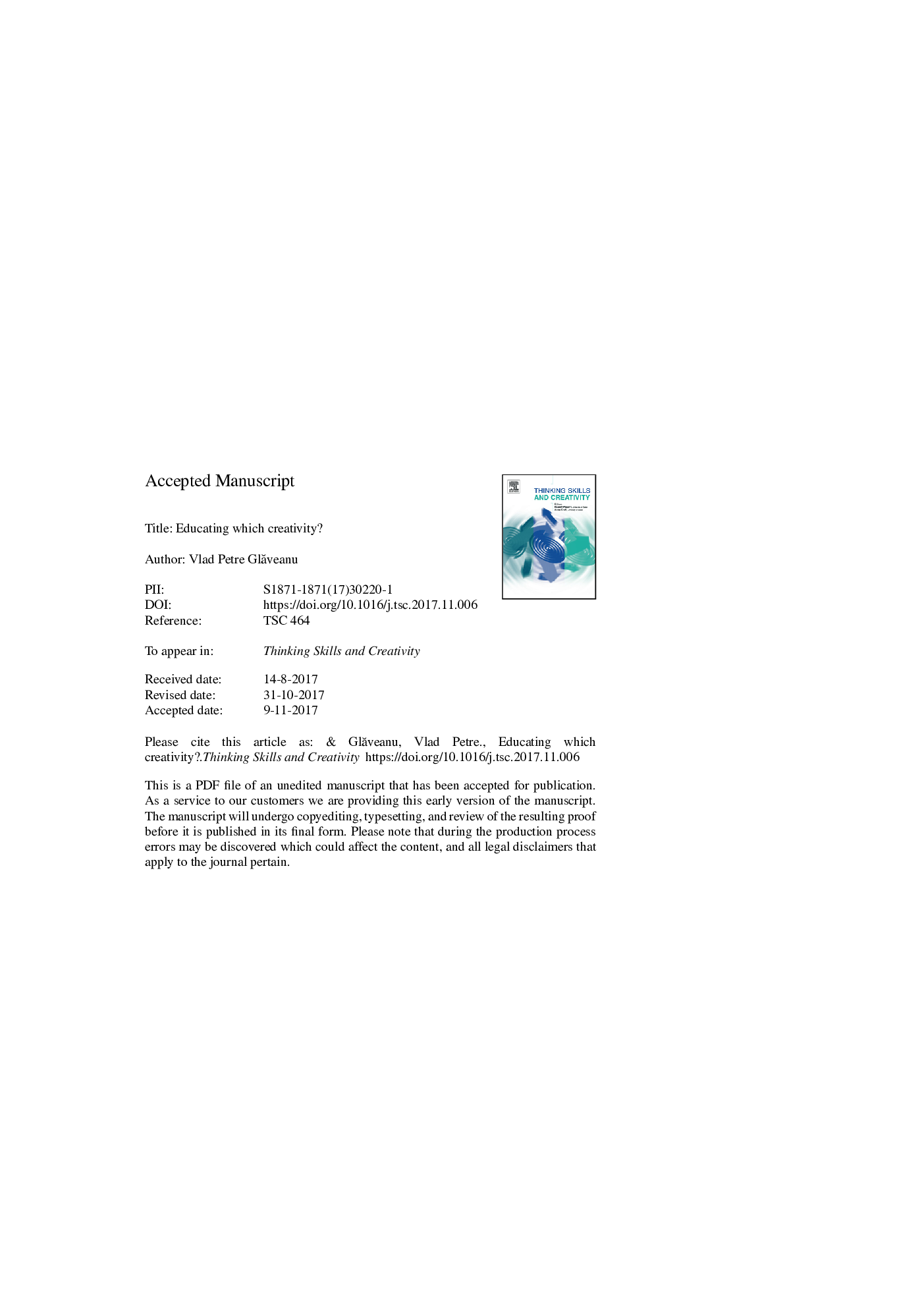| Article ID | Journal | Published Year | Pages | File Type |
|---|---|---|---|---|
| 6851837 | Thinking Skills and Creativity | 2018 | 22 Pages |
Abstract
This paper explores the sociocultural construction of creativity and reflects on its implications for how we understand and educate creative potential. Drawing on a historical analysis of creativity and related concepts, such as genius and talent, from Antiquity onwards, I identify three prototypical ways of defining creativity. The first and most common one, continuing the legacy of the Renaissance and Romanticism, associates creativity with the arts and emphasizes self-expression, originality, and divergent thinking. The second one, related to the ideals of the Enlightenment, connects creativity with science and discovery and brings to the fore its functional, problem solving aspects. Last but not least, post-modernity advances new metaphors for creativity and invites us to rethink its everyday life dynamic. One of them is that of the craftsmen, ready to mix and match, to experiment and reflect on the role of tradition and habit in creativity. Each one of these paradigmatic positions - the artist, the inventor, and the craftsmen - propose different relations between creativity and society and have deep implications for how we discover and cultivate creativity in education and beyond.
Keywords
Related Topics
Social Sciences and Humanities
Psychology
Developmental and Educational Psychology
Authors
Vlad Petre GlÄveanu,
